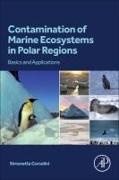Read more
Contamination of Marine Ecosystems in Polar Regions: Basics and Applications discusses the pressing environmental issues facing the Arctic and Antarctic regions. The book is based on the author's lectures and research over the past decade, providing readers with a comprehensive understanding of marine contamination from an ecological standpoint. Key topics include the distribution of persistent organic pollutants, their transfer from non-living compartments to organisms, human chemical impacts, global change effects on pollutant distribution, and how tourism affects warming polar oceans.
The book is divided into two parts. The first part covers the basics of geography, polar climate, ecosystem structure, contaminant properties, and marine biology and ecology. The second part presents case studies that illustrate the ecological impacts of the topics discussed in Part One. This structure helps readers gain a holistic view of contamination issues in marine ecosystems of polar regions.
List of contents
Part I. Contaminants and Polar Regions1. Contaminants
1.1 The Stockholm Convention on Persistent Organic Pollutants (POPs)
1.2 The Basel and Rotterdam Conventions
1.3 The Persistent Organic Pollutants: basics on chemical structure, synthesis and production, main use, environmental sources, incidents
1.3.1 Chlorinated pesticides. Case studies
1.3.2 Polychlorinated-dibenzo dioxins, polychlorinated-dibenzo furans. Case studies
1.3.3 Polychlorinated-biphenyls. . Case studies
1.3.4 Toxicity of dioxin-like compounds and toxic assessment. Case studies
1.3.5 Endocrine disruptor chemicals and their toxicity
1.3.6 Polybromodiphenyl ethers. Case studies
1.3.7 Perfluoroalkyl substances. Case studies
1.3.8 Pharmaceuticals and Personal Care Products
1.4 Hydrocarbons and their derivate: basics on origin, transport, dispersion, degradation, remediation, incidents. Case studies
1.5 Persistent plastic materials (PPMs): basics on composition, origin, environmental sources, methods of study, dispersion and side-effects; plastics and POPs, plastics and plasticizers, damage to organisms
2. Global dispersion of POPs
2.1 Contaminant properties affecting the contaminant global transport
2.2 Contamination and demography
2.2.1 The remote regions
2.3 Contaminant transport to remote regions
About the author
Simonetta Corsolini is a Senior Researcher, Adjunct Professor in the Department of Physical, Earth and Environmental Sciences, Ecotoxicology and Remote Regions, University of Siena, Siena, Italy.

